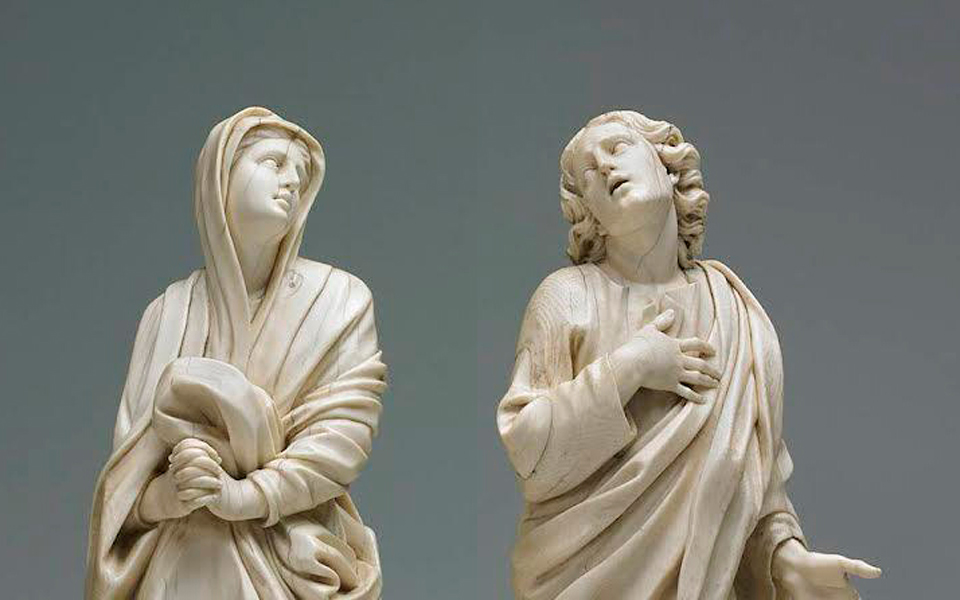
Two Intense Ivory Figures
Ivory sculpture, from mid-16th century and over the next two centuries, was considered one of the finest artistic disciplines inside the European courts to such an extent that princes, nobles and major ecclesiastical figures were contending Flemish, German and Austrian artists, among the most skilled in working with that noble material.
Such is the case with these two remarkable figurines recently attributed to the great German sculptor Johann Balthasar Stockamer (Nuremberg, doc. 1664-about 1700), a pupil of Georg Schweigger, who spent a central part of his artistic career in Italy.
His presence in our country is witnessed from 1664 to 1669 by letters from Agostino Monanni, agent in Rome for Cardinal Leopoldo de’ Medici. Under the Cardinal’s protection, which imposed on him the supervision of the great painter Pietro da Cortona – by whom Stockamer was greatly influenced – the German artist produced during his Roman years important ivory works, such as Justice and Peace, Hercules and the Hydra, and David with the Head of Goliath, the latter inspired by Giovan Francesco Susini bronze model.
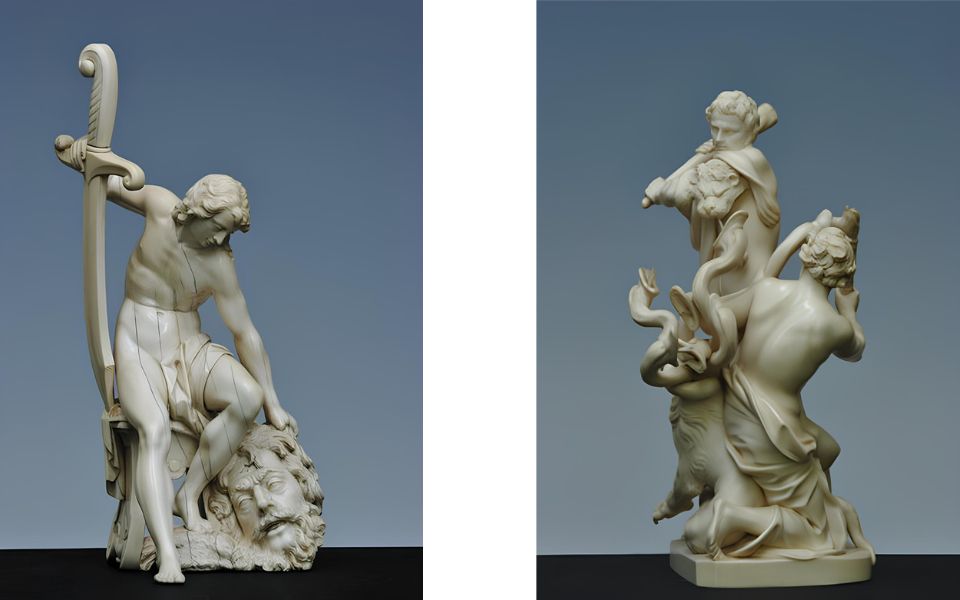
Stockamer’s unmistakable style is evident in the treatment of the voluminous draperies and the extreme attention to hands and feet details, features that we also find in our two statuettes, most likely originally part of a Crucifixion group.
The mentioned influence of the well-known Pietro da Cortona on Stockamer’s works also emerges from a comparison of our two statuettes with an important canvas by the painter depicting a Crucifixion, particularly in the exquisite rendering of the hands: the Virgin is portrayed with interlocked fingers, a very rare detail in ivory carvings while St. John is depicted with his left hand open with fingers spread apart and his right hand retracted on the chest.
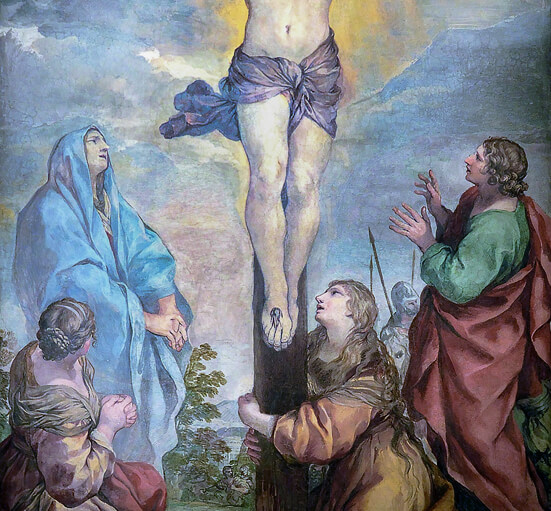
Another strong similarity with Pietro da Cortona’s canvas can be noticeable in the abundant and flowing draperies wrapping the two mourners, with rich plastic folds covering their bodies: the Virgin wears the same wide mantle that encircles her head and whose fabric is articulated in complex folds, partly clasped in her arms.
The massive and monumental volumes of Mary and St. John most likely derive also from the observation and study of ancient and modern statues collected at the Villa Medici in Rome, where the artist lived, salaried by the namesake family.
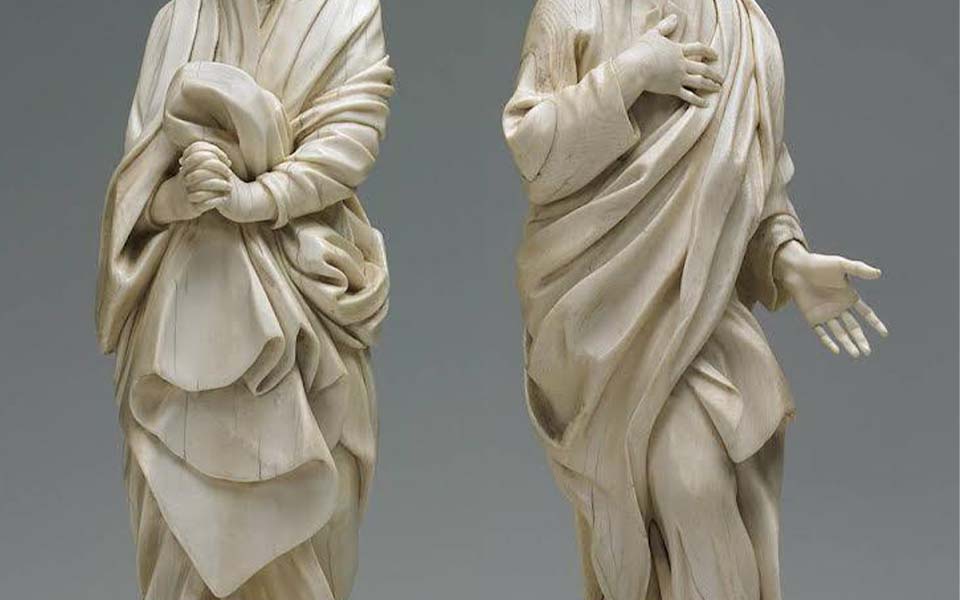
The two figures, shown standing and in contrapposto, rest on an octagonal base carved from the same block of ivory from which the entire statuette was carved. The Virgin appears to be advancing, loading the weight on her right foot, which sticks out from her voluminous robe while the left foot rests on the tiptoe with a slight twist; St. John’s feet rest more firmly on the base, the left foot advancing and the right one backward.
This dynamism of the lower limbs can be found also in the famous sculptural group of Hercules and the Hydra, preserved in the Treasury of the Grand Dukes at Pitti Palace.
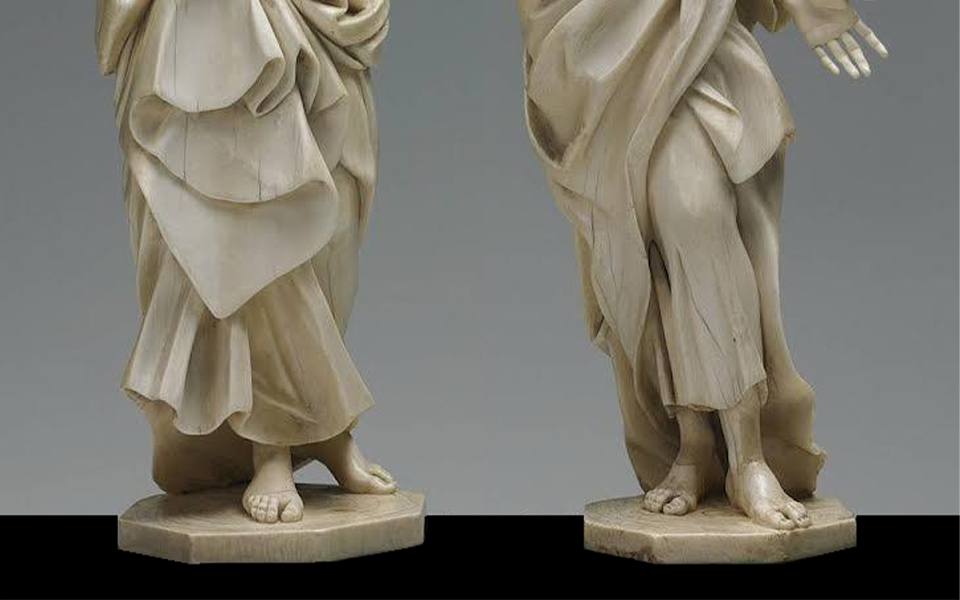
Lastly the faces of the two mourners have intense expressions: both the faces of Mary and St. John are rotated and turned upward. Mary has a sorrowful but composed appearance while the Saint – depicted with the traditional curls framing his face – appears suffering but posed in dignified grief and with his mouth half open, as if whispering a cry of distress.
From the analysis carried out so far, it is likely to believe that our sculptures were made by Stockamer during his stay in Rome, that is around the second half of the 1660s, the same years of his other masterpieces later arrived at the Pitti Palace, where they are still preserved at the Treasury of the Grand Dukes.
In 1669 the artist leaves Leopoldo de’ Medici’s court in Rome to return to his homeland, where he will continue his important activity as a sculptor in other German courts.
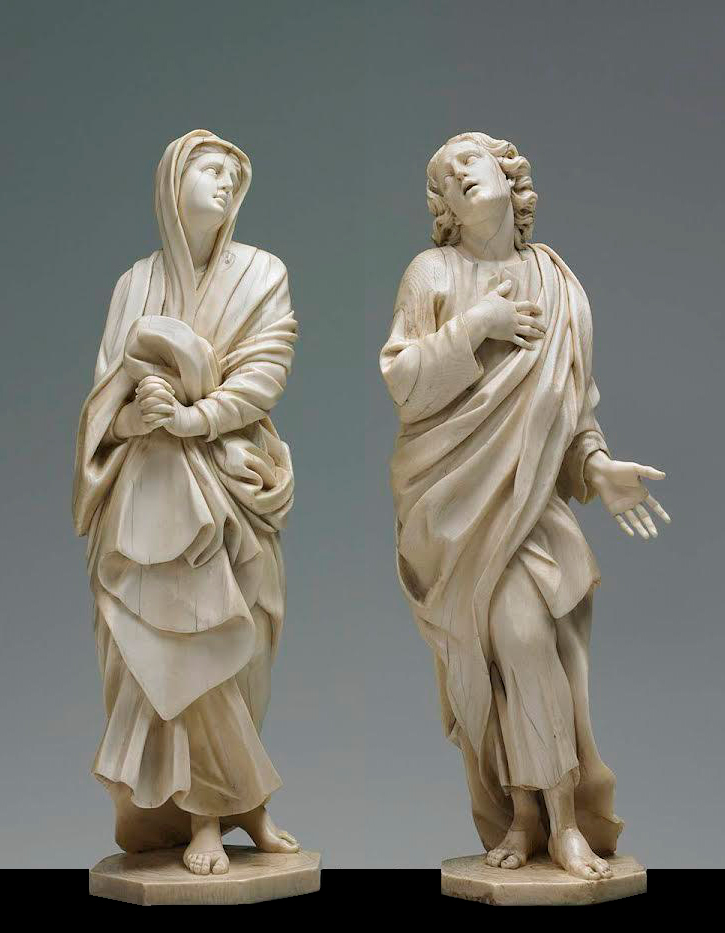
Johann Balthasar Stockamer, attr.
(Nuremberg, documented 1664 – around 1700)
VIRGIN AND SAINT JOHN
Carved ivory
Italy
Around 1665-1669
H. cm 34
References: K . Aschengreen Piacenti, Le opere di Balthasar Stockamer durante i suoi anni romani, in « Bollettino d ‘ Arte », XIVIII, 1963 , p. 99 ss; Johann Balthasar Stockamer: ein Nürnberger Bildhauer des 17. Jahrhunderts in Italien und Sachsen in “Anzeiger des Germanischen Nationalmuseums”, 2002, pp. 293-309; Diafane Passioni. Avori barocchi dalle corti europee, (exh. Cat., Firenze, Palazzo Pitti, Museo degli Argenti, 16 July – 3 November 2013) ed. by E. Schmidt, M. Sframeli, K. Aschengreen Piacenti, Firenze 2003.
© 2013 – 2023 cesatiecesati.com | Please do not reproduce without our expressed written consent
Alessandro Cesati, Via San Giovanni sul Muro, 3 – 20121 Milano – P.IVA: IT06833070151